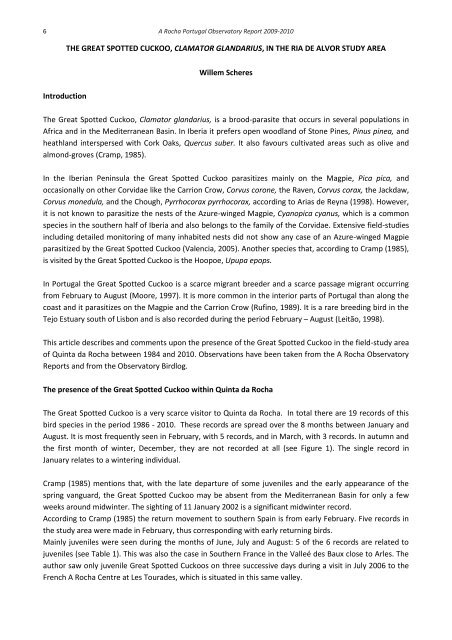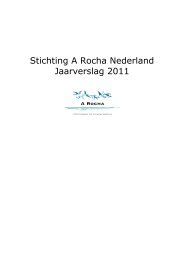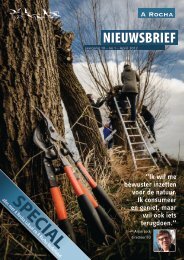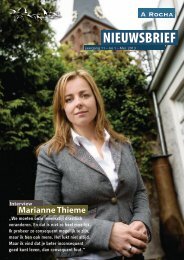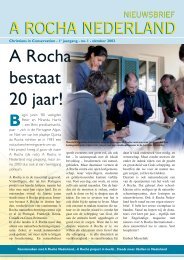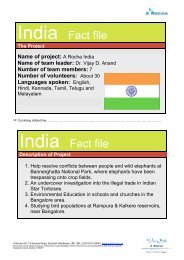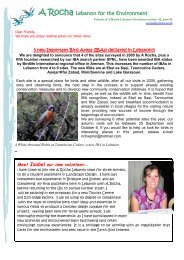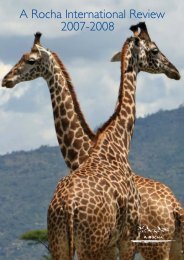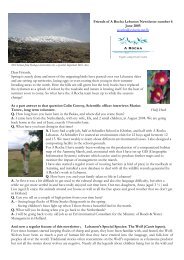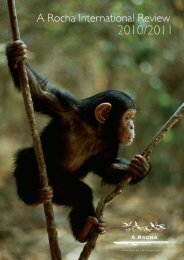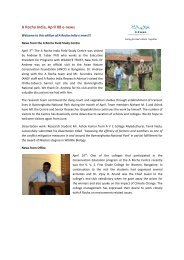A Rocha Portugal Observatory Report 2009-2010
A Rocha Portugal Observatory Report 2009-2010
A Rocha Portugal Observatory Report 2009-2010
You also want an ePaper? Increase the reach of your titles
YUMPU automatically turns print PDFs into web optimized ePapers that Google loves.
6 A <strong>Rocha</strong> <strong>Portugal</strong> <strong>Observatory</strong> <strong>Report</strong> <strong>2009</strong>-<strong>2010</strong><br />
Introduction<br />
THE GREAT SPOTTED CUCKOO, CLAMATOR GLANDARIUS, IN THE RIA DE ALVOR STUDY AREA<br />
Willem Scheres<br />
The Great Spotted Cuckoo, Clamator glandarius, is a brood-parasite that occurs in several populations in<br />
Africa and in the Mediterranean Basin. In Iberia it prefers open woodland of Stone Pines, Pinus pinea, and<br />
heathland interspersed with Cork Oaks, Quercus suber. It also favours cultivated areas such as olive and<br />
almond-groves (Cramp, 1985).<br />
In the Iberian Peninsula the Great Spotted Cuckoo parasitizes mainly on the Magpie, Pica pica, and<br />
occasionally on other Corvidae like the Carrion Crow, Corvus corone, the Raven, Corvus corax, the Jackdaw,<br />
Corvus monedula, and the Chough, Pyrrhocorax pyrrhocorax, according to Arias de Reyna (1998). However,<br />
it is not known to parasitize the nests of the Azure-winged Magpie, Cyanopica cyanus, which is a common<br />
species in the southern half of Iberia and also belongs to the family of the Corvidae. Extensive field-studies<br />
including detailed monitoring of many inhabited nests did not show any case of an Azure-winged Magpie<br />
parasitized by the Great Spotted Cuckoo (Valencia, 2005). Another species that, according to Cramp (1985),<br />
is visited by the Great Spotted Cuckoo is the Hoopoe, Upupa epops.<br />
In <strong>Portugal</strong> the Great Spotted Cuckoo is a scarce migrant breeder and a scarce passage migrant occurring<br />
from February to August (Moore, 1997). It is more common in the interior parts of <strong>Portugal</strong> than along the<br />
coast and it parasitizes on the Magpie and the Carrion Crow (Rufino, 1989). It is a rare breeding bird in the<br />
Tejo Estuary south of Lisbon and is also recorded during the period February – August (Leitão, 1998).<br />
This article describes and comments upon the presence of the Great Spotted Cuckoo in the field-study area<br />
of Quinta da <strong>Rocha</strong> between 1984 and <strong>2010</strong>. Observations have been taken from the A <strong>Rocha</strong> <strong>Observatory</strong><br />
<strong>Report</strong>s and from the <strong>Observatory</strong> Birdlog.<br />
The presence of the Great Spotted Cuckoo within Quinta da <strong>Rocha</strong><br />
The Great Spotted Cuckoo is a very scarce visitor to Quinta da <strong>Rocha</strong>. In total there are 19 records of this<br />
bird species in the period 1986 - <strong>2010</strong>. These records are spread over the 8 months between January and<br />
August. It is most frequently seen in February, with 5 records, and in March, with 3 records. In autumn and<br />
the first month of winter, December, they are not recorded at all (see Figure 1). The single record in<br />
January relates to a wintering individual.<br />
Cramp (1985) mentions that, with the late departure of some juveniles and the early appearance of the<br />
spring vanguard, the Great Spotted Cuckoo may be absent from the Mediterranean Basin for only a few<br />
weeks around midwinter. The sighting of 11 January 2002 is a significant midwinter record.<br />
According to Cramp (1985) the return movement to southern Spain is from early February. Five records in<br />
the study area were made in February, thus corresponding with early returning birds.<br />
Mainly juveniles were seen during the months of June, July and August: 5 of the 6 records are related to<br />
juveniles (see Table 1). This was also the case in Southern France in the Valleé des Baux close to Arles. The<br />
author saw only juvenile Great Spotted Cuckoos on three successive days during a visit in July 2006 to the<br />
French A <strong>Rocha</strong> Centre at Les Tourades, which is situated in this same valley.


